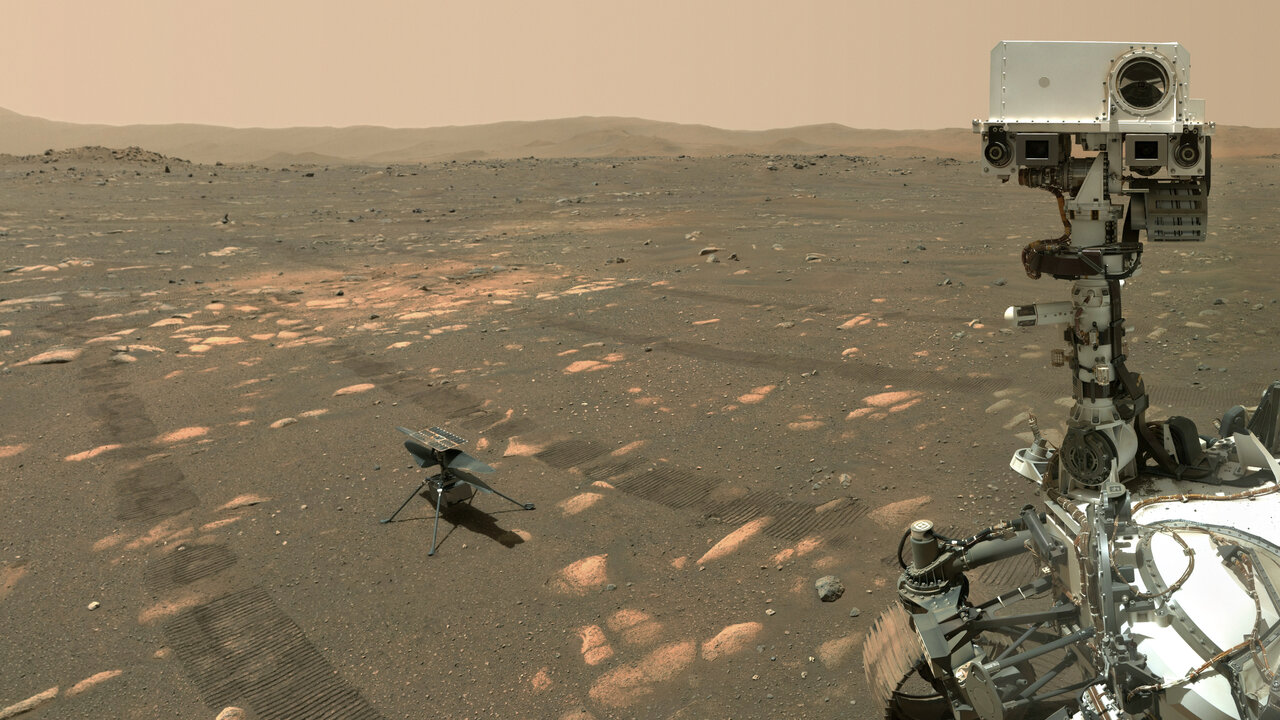In early 2021, we were eagerly awaiting the arrival of the Perseverance rover at Jezero crater on Mars. The first part of the year was devoted to the Red Planet – with a successful landing of a rover and the very first helicopter flight over another world.
As the year progressed, our asteroid missions became in the spotlight. OSIRIS-REx began its journey back to Earth with valuable cargo and two new asteroid missions – Lucy and DART – were launched into the sky.
Here’s NASA’s 2021 roundup of planetary science, highlighting the year’s most spectacular imagery, groundbreaking discoveries, and most incredible mission milestones.
February 18, 2021: Landing! Perseverance Rover lands on Mars
- Millions of people have watched Perseverance parachute and jetpack down to land on the Red Planet, ready to begin its multi-year mission to search for signs of ancient life and collect rock samples for possible return to Earth. The rover has so far collected six samples and sent thousands of images, along with data on the geology, weather and even the sounds of Mars. Perseverance also paves the way for human explorers in other ways, such as testing technology to extract oxygen from the Martian atmosphere.
March 18, 2021: Hubble sees the seasons change on Saturn
-
https://www.nasa.gov/image-feature/goddard/2021/saturn-season-change
-
This series of images taken in 2018, 2019 and 2020 by the Hubble Space Telescope shows slight changes in Saturn’s northern hemisphere atmosphere as the season shifts from summer to fall after seven long Earth years. summer. Over three years, the equator is 5 to 10 percent brighter, and the winds have changed slightly. In 2018, the winds measured near the equator were approximately 1,000 miles per hour (1,609 kilometers per hour). In 2019 and 2020, winds decreased to 800 miles per hour (1,287 kilometers per hour). Can you spot the difference in the pictures? (Hint: look at the north pole.)
April 19, 2021: Ingenuity’s first flight
-
NASA’s Ingenuity Mars Helicopter Completes Historic First Flight
-
Video: https://mars.nasa.gov/resources/25854/perseverance-rovers-mastcam-z-captures-ingenuitys-third-flight/
-
The Ingenuity helicopter was originally designed as a technology demonstration to test the feasibility of flying in the thin atmosphere of Mars. After being transported to the surface by the Perseverance rover, it made five scheduled test flights. These went so well that the project moved into an operational demonstration phase, exploring how future rovers and air explorers can work together. Ingenuity has performed 18 successful flights so far. In this video from April 25, 2021, the helicopter takes off and lands, seen by a camera aboard Perseverance. As expected, Ingenuity flew out of the camera’s field of view while making a flight plan that brought it 164 feet (50 meters) downstream of the take-off point. Keep watching – the helicopter will come back to glue the landing.
April 26, 2021: Image of a landslide in Klute crater
Exciting new images from the LROC team
Our Lunar Reconnaissance Orbiter has been on the Moon for over 12 years now and continues to capture incredible images from our natural satellite. In this narrow-angle camera image, the west wall of Klute Crater on the other side of the Moon has collapsed towards the bottom of the crater, possibly as a result of a nearby earthquake or impact from area. Images like these demonstrate that the Moon is geologically more dynamic than previously thought.
May 10, 2021: OSIRIS-REx leaves Bennu
-
NASA’s OSIRIS-REx spacecraft heads for Earth with asteroid sample
-
For about two years, the OSIRIS-REx spacecraft orbiting asteroid Bennu – a pile of rubble in space about as high as the Empire State Building. In October 2020, Bennu descended to the asteroid’s surface to capture a sample of the material. In 2021, OSIRIS-REx left its asteroid to begin the 2.5-year journey. The sample collection itself has already taught us a lot about this common type of asteroid, but we promise to learn even more when OSIRIS-REx drops its sample on our home planet in 2023.
-
Image: Before / after images from the Nightingale website
June 2, 2021: Selections of Venus missions
June 7, 2021: Return to Ganymède
August 11, 2021: OSIRIS-REx provides insight into future orbit of asteroid Bennu
September 1, 2021: Perseverance collects a sample
-
NASA’s Perseverance Rover collects first Martian rock sample
-
NASA Perseverance Launches Remarkable Sample Return Mission
-
On September 1, NASA’s Perseverance rover deployed its arm, placed a drill on the Martian surface, and drilled about 2 inches, or 6 centimeters, to extract a rock core. The rover then sealed the core rock in an airtight titanium tube, making it available for future recovery. This historic event marked the first time that a spacecraft has packaged a rock sample from another planet that could be returned to Earth by a future spacecraft. Mars Sample Return is a multi-mission campaign designed to collect the carrots that Perseverance will collect over the next few years. Currently in the design and technological development phase, the campaign is one of the most ambitious endeavors in the history of spaceflight, involving multiple spacecraft, multiple launches, and dozens of government agencies.
September 15, 2021: NASA confirms thousands of ancient and Martian volcanic eruptions
October 16, 2021: Launch of the Lucy mission to the Trojan asteroids
-
NASA and ULA Launch Lucy Mission to ‘Fossils’ of Planet Formation
-
On October 16, the Lucy mission was launched from the Kennedy Space Center. Lucy will travel for six years before reaching her destination: the Trojan asteroids of Jupiter. These planetary building blocks have been trapped in Jupiter’s orbit for 4.5 billion years and may reveal important information about the beginnings of our solar system. But it is for the future. This year, we watched in amazement as Lucy soar into space, and then we marked the moment in our #LucyTimeCapsules.
-
Image: https://www.nasa.gov/sites/default/files/thumbnails/image/nhq202110160003.jpg

